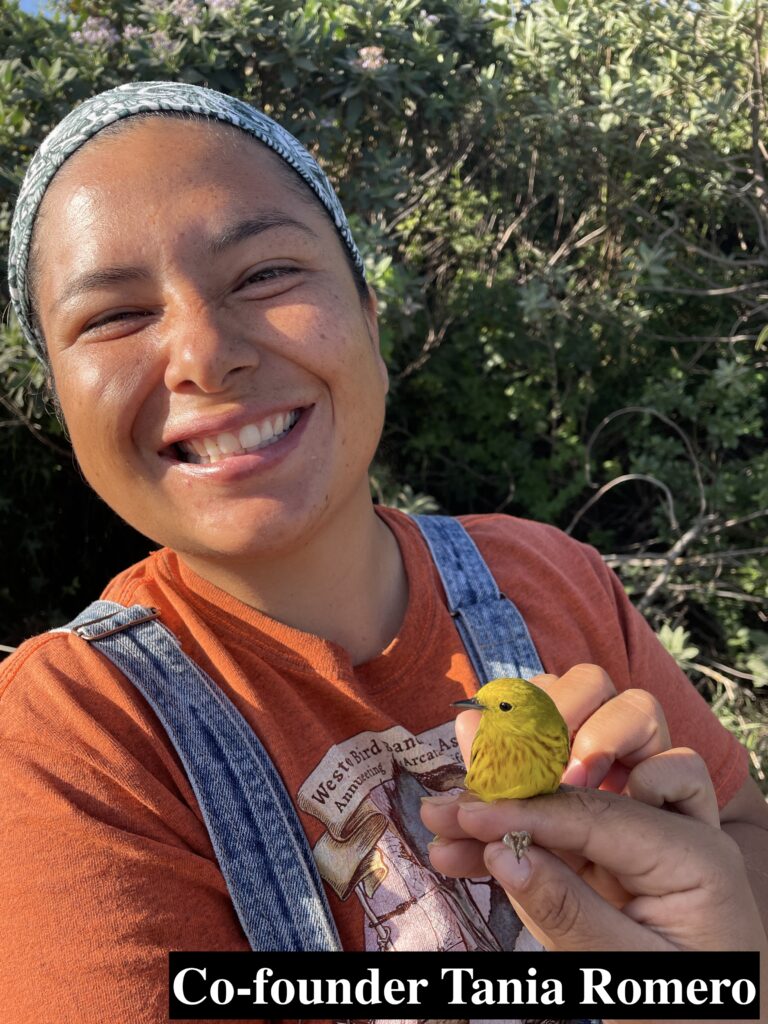History
In Spring 2016, local wildlife biologist Dan Maxwell observed hundreds of migratory birds passing through the low saddle of Bear Divide during daylight hours. While visiting the site for environmental consulting work, he inadvertently stumbled upon this unique phenomenon, which then became known only to a few in the local birding community. However, no consistent monitoring efforts were yet implemented.
In the Springs of 2017 and 2018, local researchers Lauren Hill and Tania Romero, along with several other future members of the Bear Divide bird banding team encountered the same migratory phenomenon while conducting early morning avian surveys for a fire ecology project. The researchers again observed hundreds of migratory birds funneling through the narrow Bear Divide mountain pass—many streaming by at eye-level and just above heads. Despite these notable sightings, the phenomenon remained poorly documented, and it was unclear whether this high volume of birds migrating during daylight hours at this locale had previously been recognized in scientific literature. This spurred conversations among local avian researchers, leading to a consensus that more standardized and consistent monitoring was essential to fully understand the events occurring at Bear Divide.


In Spring 2020, Dr. Ryan Terrill, then a post-doctoral researcher at the Moore Lab of Zoology at Occidental College, initiated preliminary avian point counts at Bear Divide. Alongside a small team of local birders, they began quantifying avian abundance and species richness. Lauren Hill who was a part of the initial point counts with Dr. Terrill and Tania Romero who was banding locally with retired researcher Walter Sakai, came together to discuss the need for complimentary sampling methods to more comprehensively monitor the migratory bird populations utilizing Bear Divide. It became increasingly clear that the migration through Bear Divide was not only abundant and diverse but also uniquely concentrated in the morning hours just after sunrise—an uncommon occurrence, as most bird species migrate nocturnally. While “morning flight” bird migration is well-documented in the northeastern U.S. and Great Lakes region, it is far less commonly observed in the western U.S., making Bear Divide a critical site for further study.
In April 2021, biologists and lead bird banders Tania Romero and Lauren Hill founded the Bear Divide Banding Station under the advisorship of master bander Walter Sakai. Since its inception, the station has operated as a long-term avian monitoring program for spring migrants along the Pacific Flyway, creating a robust dataset to assess temporal trends in migratory population dynamics and physiological condition. Beyond research, the Bear Divide Banding Station is committed to professional development, education, and outreach. The station offers certification-level passerine bander training to a growing list of volunteers, engages with dozens of daily visitors from the public, academic institutions, conservation organizations, and ornithological clubs, and serves as a research platform for 12 collaborative project partners.


In just a few short years since monitoring efforts began, Bear Divide has emerged as a novel and exciting location to observe dawn migration in the western U.S., providing a unique opportunity to study a large and diverse concentration of spring migratory birds along the Pacific Migratory Flyway.
Migration Counts
Established in 2021 by Dr. Ryan Terrill and the Moore Lab of Zoology at Occidental College, the Bear Divide Migration Count continues regularly each spring season to quantify the numbers and identities of birds migrating through Bear Divide. Though independent projects, the Bear Divide Banding Station works collaboratively with the Migration Count team to monitor migratory bird populations and develop research questions that compare datasets. This research collaboration supports a more thorough sampling effort and representative report of what birds are migrating through this region of Los Angeles County and help further establish Bear Divide as one of the most significant locations to research dawn migration of songbirds on the West Coast.


Our Logo
In 2023, local artist, illustrator, and naturalist Margaret Gallagher was commissioned to illustrate the banding station logo. Depicted in the center is one of the more abundant warbler captures, a Townsend’s warbler wearing a uniquely-numbered aluminum band. Flying above the mountainous divide at dawn from left to right are bird species Western Flycatcher, Hermit Warbler, Lazuli Bunting, Yellow Warbler, and Western tanager—inspired by photographs of birds in flight taken by Dr. Terrill. Also represented from left to right are the plant species Bush Poppy, Ceanothus sp., and Yerba Santa, which represent the most dominant species of the montane chaparral plant community that characterizes the site. Additionally, in the lower right corner is a mist-net which is used to safely capture passerines for bird banding. Check out more of Margaret’s incredible work below!

